Abstract
The presence of surface-associated immunoglobulins and Fc receptors on mononuclear cells from normal human blood was investigated by the direct immunofluorescence technique combined with phase-contrast microscopy. Formaldehyde-fixed cells were compared to unfixed cells and to cells preincubated at 37 degrees C. In the unfixed samples a separate population which showed Fc receptors in an immunofluorescence technique using a labelled antigen--antibody complex was detected. This cell population showed an atypical, i.e. not clearly membrane-associated, pattern of fluorescence with anti-Fab conjugates. This interaction most probably is due to autologous IgG molecules taken up by these cells from the donor serum. Using phase-contrast microscopy, these cells were morphologically distinct from lymphocytes and mature monocytes. They will be referred to as 'undefined mononuclear cells' (UMC). After formaldehyde fixation or preincubation at 37 degrees C the interaction of the UMC with anti-Fab conjugates could no longer be demonstrated. Mature monocytes show the same atypical fluorescence pattern with anti-Fab conjugates, but in contrast to the UMC the interaction persists after formaldehyde fixation or preincubation at 37 degrees C. No evidence was found for passive uptake of labelled IgG from conjugates by any mononuclear cell F(ab')2 fragments of IgG from antisera gave results similar to those obtained with intact IgG fractions. The morphology of the different cell subpopulations is described and their relative numbers in normal blood are given. Formaldehyde fixation proved to be a simple and useful procedure, especially for the determination of the number of B lymphocytes, because the Fc receptor of the undefined mononuclear cell does not give rise to confusion.
Full text
PDF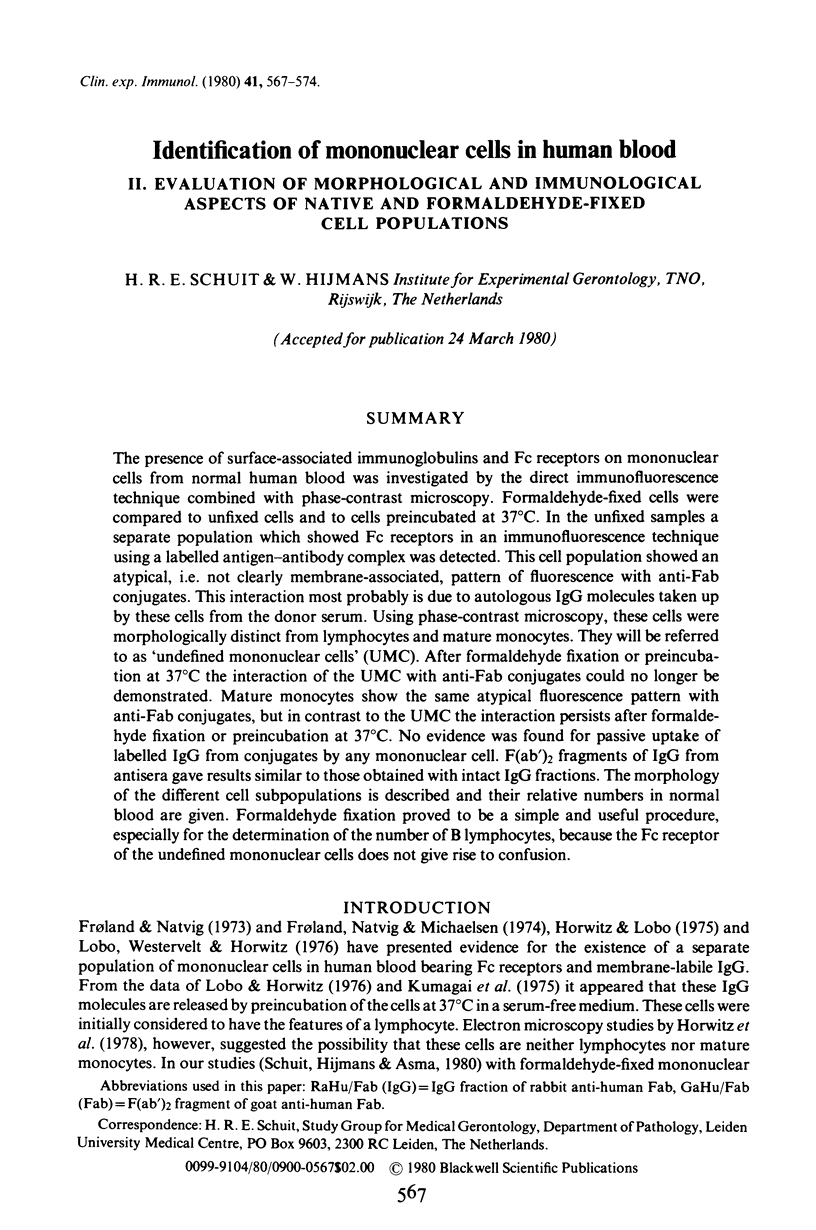
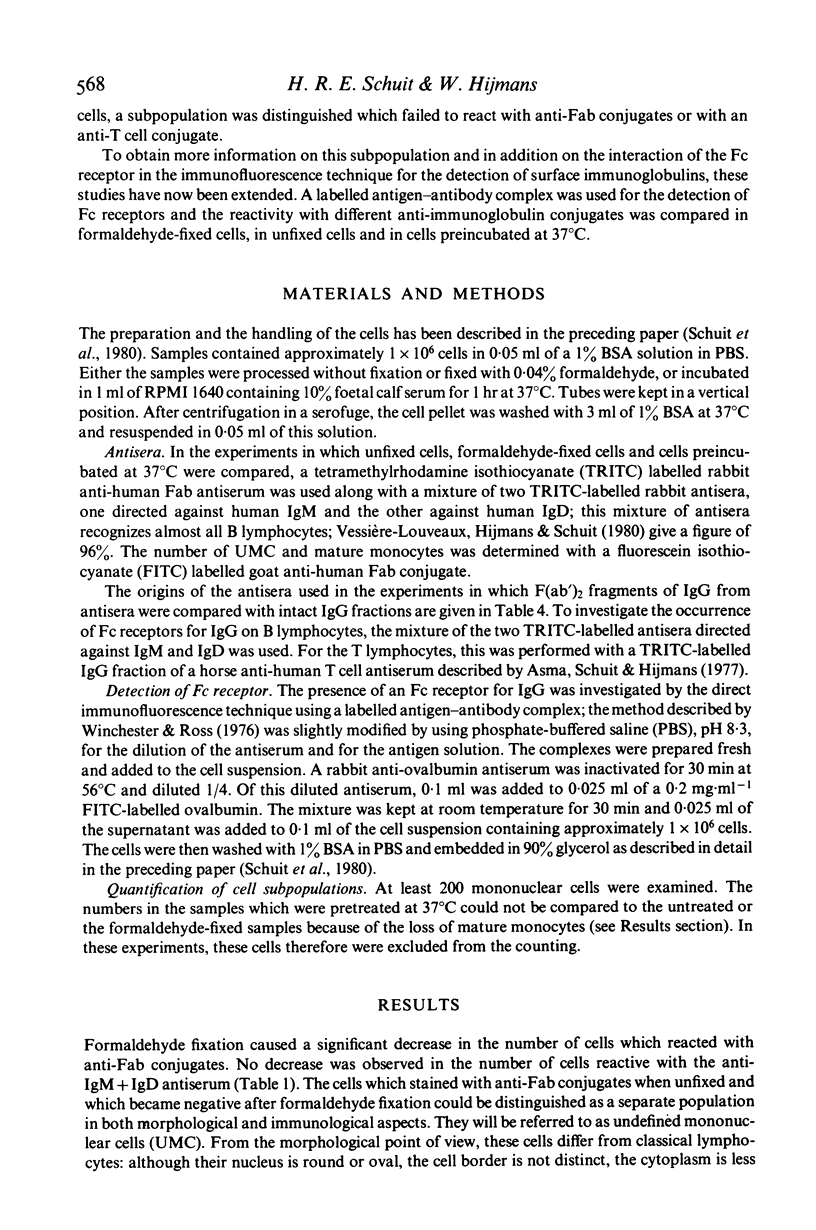
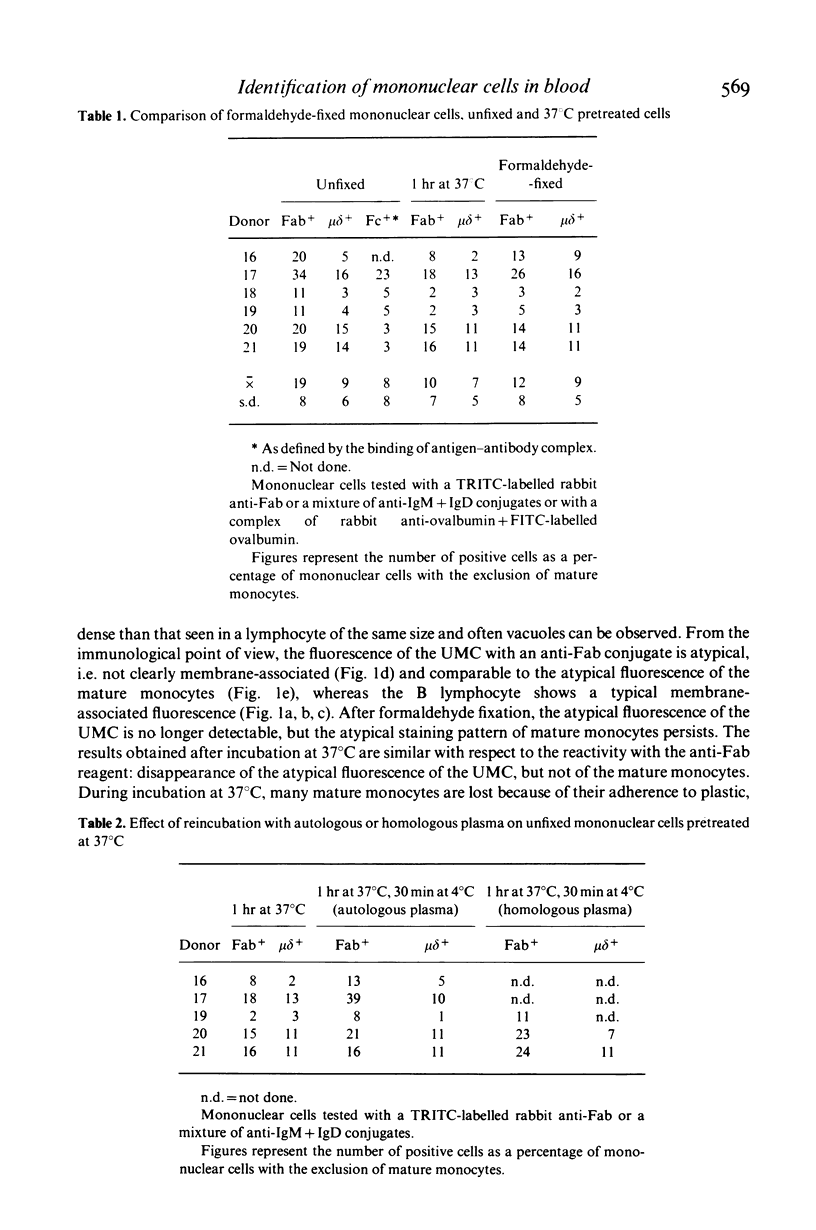
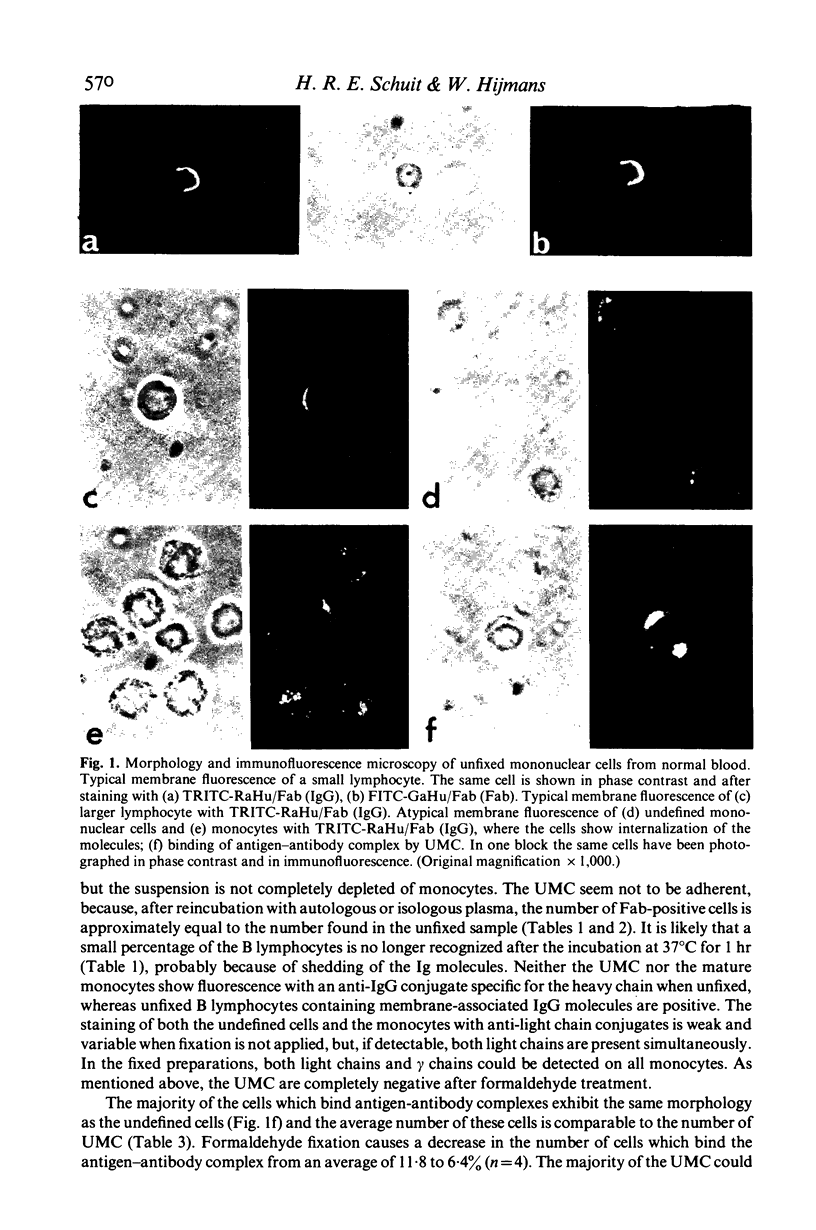
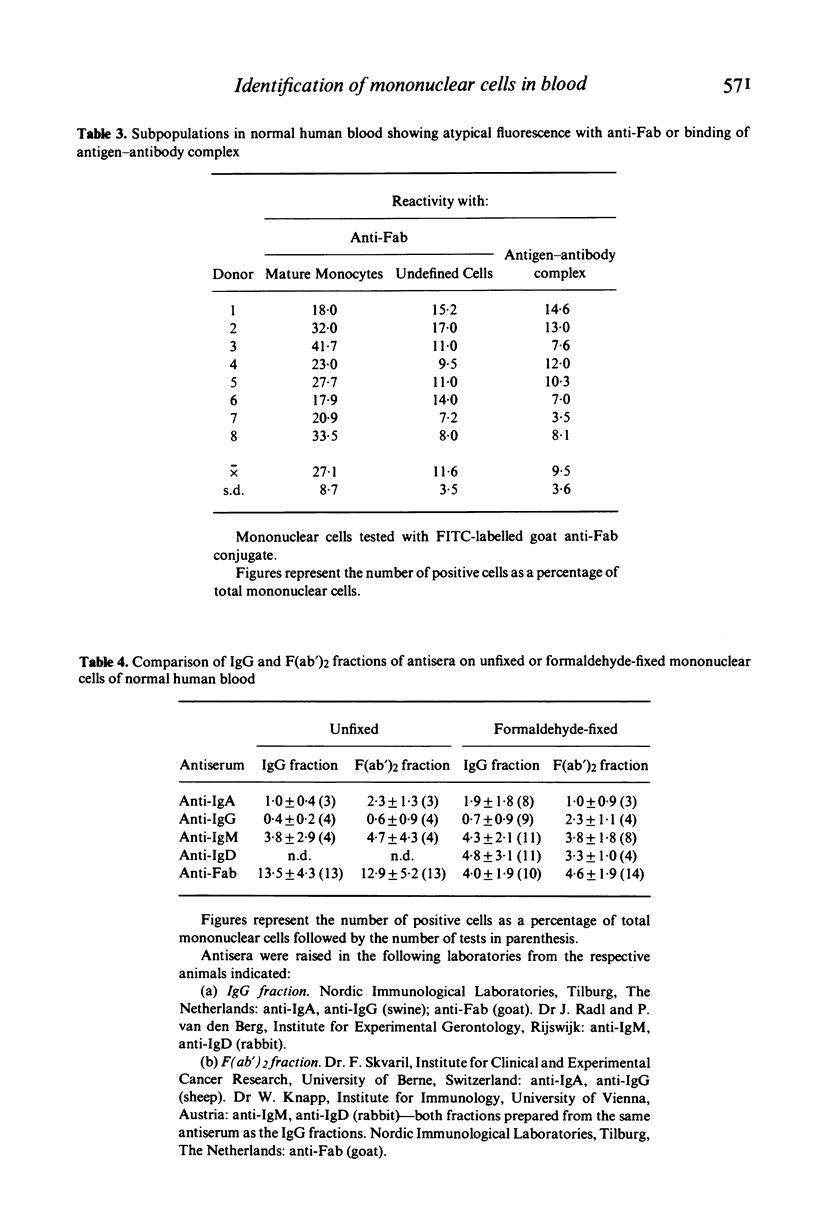
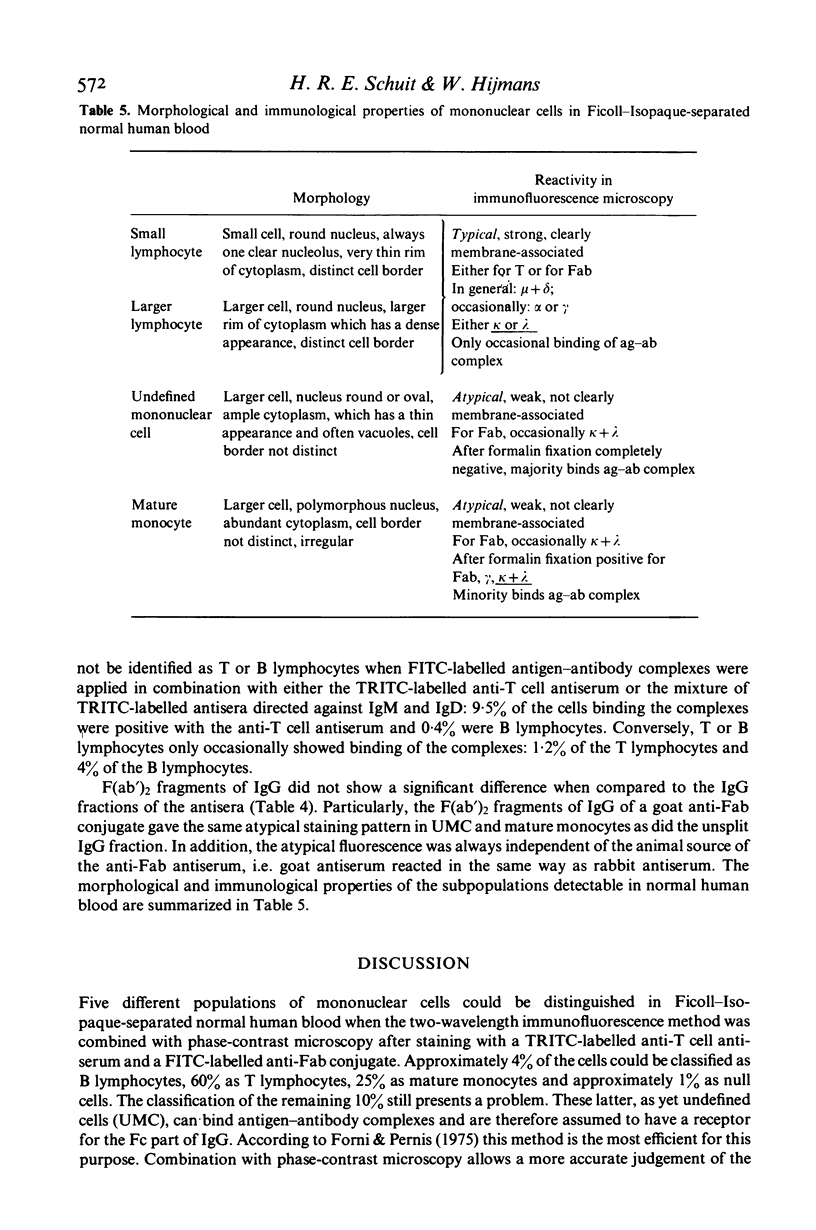
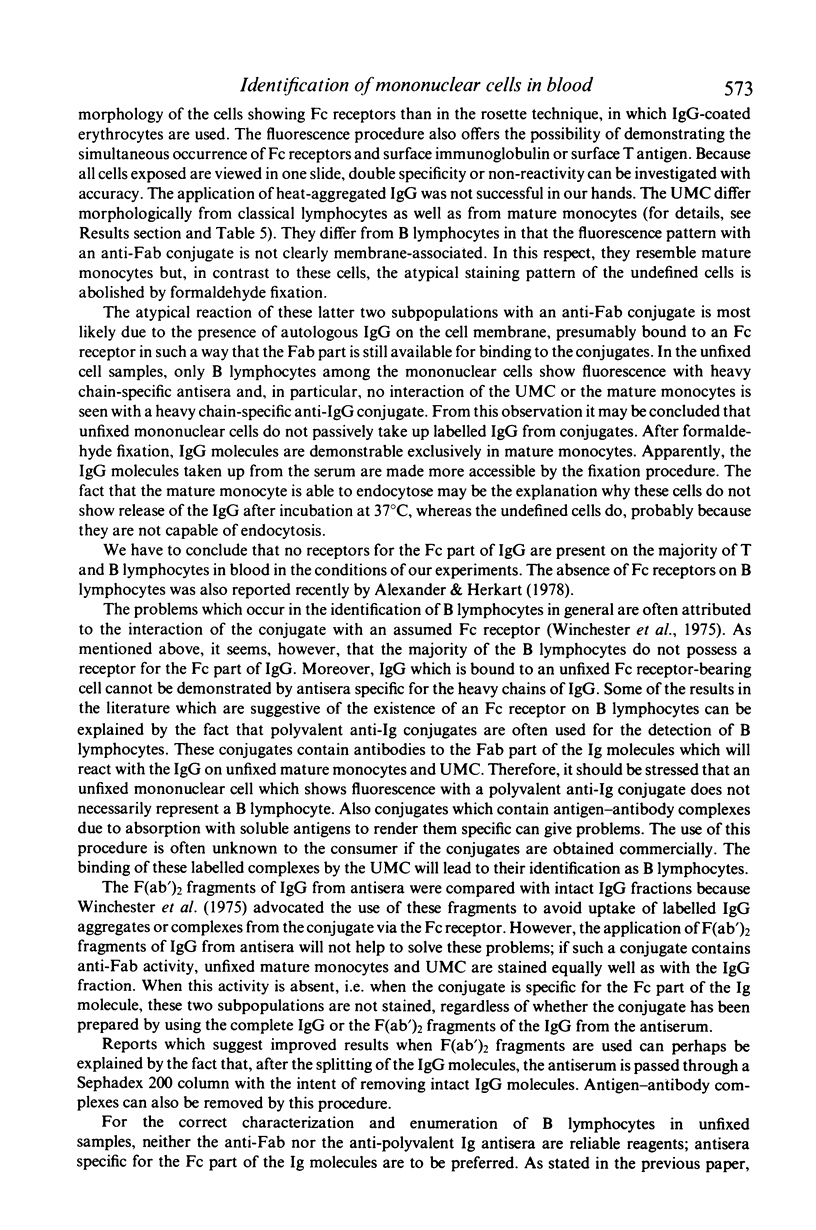
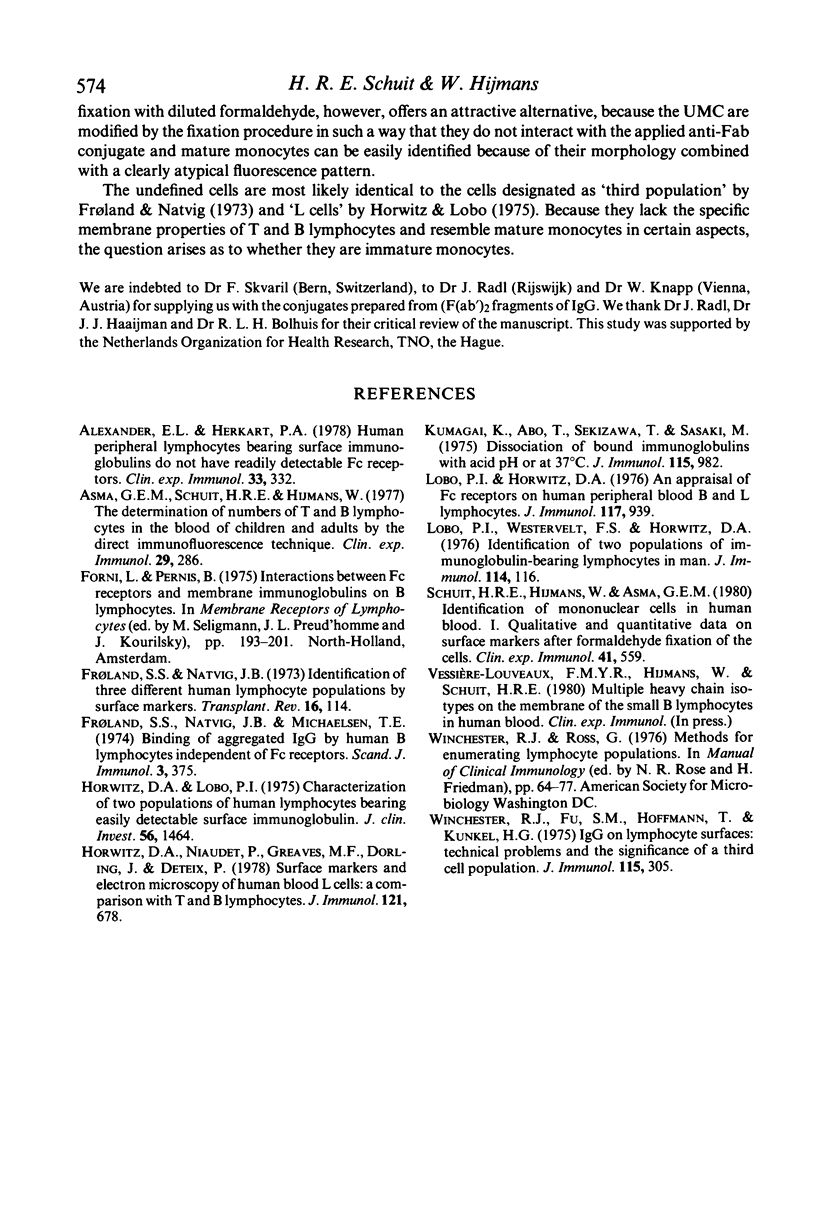
Images in this article
Selected References
These references are in PubMed. This may not be the complete list of references from this article.
- Alexander E. L., Henkart P. A. Human peripheral lymphocytes bearing surface immunoglobulin do not have readily detectable Fc receptors. Clin Exp Immunol. 1978 Aug;33(2):332–339. [PMC free article] [PubMed] [Google Scholar]
- Asma G. E., Schuit H. R., Hijmans W. The determination of numbers of T and B lymphocytes in the blood of children and adults by the direct immunofluorescence technique. Clin Exp Immunol. 1977 Aug;29(2):286–294. [PMC free article] [PubMed] [Google Scholar]
- Froland S. S., Natvig J. B. Identification of three different human lymphocyte populations by surface markers. Transplant Rev. 1973;16:114–162. doi: 10.1111/j.1600-065x.1973.tb00119.x. [DOI] [PubMed] [Google Scholar]
- Froland S. S., Natvig J. B., Michaelsen T. E. Binding of aggregated IgG BY HUMAN B lymphocytes independent of Fc receptors. Scand J Immunol. 1974;3(3):375–380. doi: 10.1111/j.1365-3083.1974.tb01268.x. [DOI] [PubMed] [Google Scholar]
- Horwitz D. A., Lobo P. I. Characterizaiton of two populations of human lymphocytes bearing easily detectable surface immunoglobulin. J Clin Invest. 1975 Dec;56(6):1464–1472. doi: 10.1172/JCI108227. [DOI] [PMC free article] [PubMed] [Google Scholar]
- Horwitz D. A., Niaudet P., Greaves M. F., Dorling J., Deteix P. Surface markers and electron microscopy of human blood L cells: a comparison with T and B lymphocytes. J Immunol. 1978 Aug;121(2):678–684. [PubMed] [Google Scholar]
- Kumagai K., Abo T., Sekizawa T., Sasaki M. Studies of surface immunoglobulins on human B lymphocytes. I. Dissociation of cell-bound immunoglobulins with acid pH or at 37 degrees C. J Immunol. 1975 Oct;115(4):982–987. [PubMed] [Google Scholar]
- Kurnick J. T., Grey H. M. Relationship between immunoglobulin-bearing lymphocytes and cells reactive with sensitized human erythrocytes. J Immunol. 1975 Jul;115(1):305–307. [PubMed] [Google Scholar]
- Lobo P. I., Horwitz D. A. An appraisal of Fc receptors on human peripheral blood B and L lymphocytes. J Immunol. 1976 Sep;117(3):939–943. [PubMed] [Google Scholar]
- Lobo P. I., Westervelt F. B., Horwitz D. A. Identification of two populations of immunoglobulin-bearing lymphocytes in man. J Immunol. 1975 Jan;114(1 Pt 1):116–119. [PubMed] [Google Scholar]
- Schuit H. R., Hijmans W., Asma G. E. Identification of mononuclear cells in human blood. I. Qualitative and quantitative data on surface markers after formaldehyde fixation of the cells. Clin Exp Immunol. 1980 Sep;41(3):559–566. [PMC free article] [PubMed] [Google Scholar]



